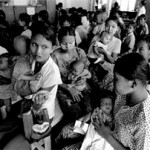Myanmar Calls For Medical Help
Antiretroviral therapy, years ago was considered a miracle which was only available to HIV patients in the West, is now no longer scarce in many of the poorest parts of the world. Pills are cheaper and easier to access, and HIV is not the same killer that once left thousands of orphaned children in sub-Saharan Africa.
However, Myanmar, otherwise known as Burma, seemed to be a great exception. Kept in the dark for so many decades by its reclusive ruling junta, this country of 60 million did not reap the same international aid as other needy nations. Heavy economic authorization imposed by countries such as the United States, along with virtually nonexistent government health funding, left an empty hole for medicine and services.
At present, Myanmar tops among the world's hardest places to get HIV care, and health experts warn it will take years to sustain a broken health system staggered by decades of abandonment.
"Burma is like the work that I did in Africa in the'90s. It's 15, 20 years out of date," says Dr. Chris Beyrer, an HIV expert at Johns Hopkins University who has worked in Myanmar for years. "If you actually tried to treat AIDS, you'd have to say that everybody with every other condition is going to die unless there are more resources."
According to UNAIDS, of the estimated 240,000 people living with HIV, half are going without treatment. And some 18,000 people die from the disease every year.
The problem became much worsened last year after the Global Fund to Fight AIDS, Tuberculosis and Malaria canceled a round of funding due to a lack of international donations. The money was expected to provide HIV drugs for 46,500 people.
Many of the 200 people crammed into the two small buildings of an HIV center just outside Yangon are simply waiting to die.
